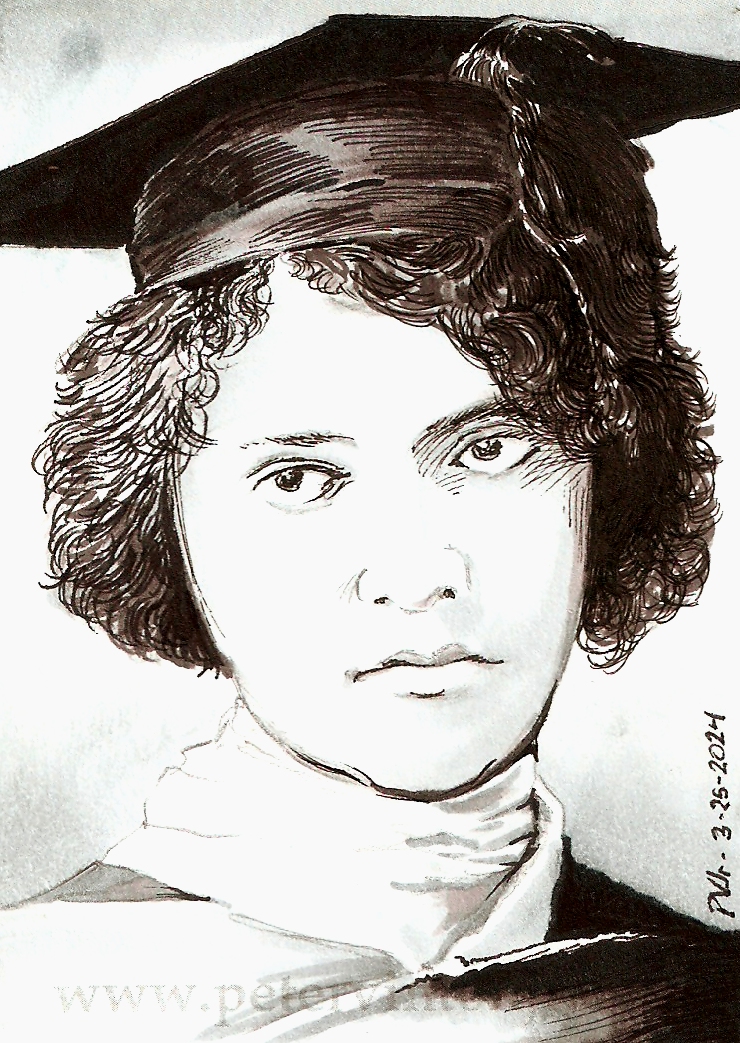Lesson 148:
Alice Augusta Ball
An ongoing illustrative history study
This piece originally posted 3/25/2024
 The first woman --of any race-- to earn a Masters' degree at the University of Hawai'i, Alice Augusta Ball's unfortunately brief life and achievements might very well have been lost to history. Born in 1892 Seattle, Ball briefly moved with her family to Hawai'i (not yet a U.S. state), but then returned to Washington to earn Bachelors' degrees in pharmaceutical chemistry (1912) and in pharmacy (1914). Ball's father James Ball, Jr., was (among other things) a professional photographer, and his father James Ball Sr., was a famous photographer in his own right --one of the very first Black Americans in the United States to learn the art/science of the daguerreotype. Alice's exposure (no pun intended!) to this still-emerging art form may have played a role in her aptitude for chemistry.
The first woman --of any race-- to earn a Masters' degree at the University of Hawai'i, Alice Augusta Ball's unfortunately brief life and achievements might very well have been lost to history. Born in 1892 Seattle, Ball briefly moved with her family to Hawai'i (not yet a U.S. state), but then returned to Washington to earn Bachelors' degrees in pharmaceutical chemistry (1912) and in pharmacy (1914). Ball's father James Ball, Jr., was (among other things) a professional photographer, and his father James Ball Sr., was a famous photographer in his own right --one of the very first Black Americans in the United States to learn the art/science of the daguerreotype. Alice's exposure (no pun intended!) to this still-emerging art form may have played a role in her aptitude for chemistry.
Ball returned to Hawai'i, enrolled at the University of Hawai'i (then known as the College of Hawai'i) and while pursuing her degree, joined the research team of the chemistry department. Her master's thesis focused on methods of extracting the active chemical in awa roots, which in turn led into her breakthrough discovery of a method of reconfiguring a water-soluble oil extract from the chaulmoogra tree, for the treatment of Hansen's Disease (perhaps better known as leprosy). An injectable regimen was developed from this research and remained the most effective treatment until the mid-1940's --leading to the full recovery of an unprecedented 78 patients.
Keep in mind that Ball's breakthrough predates modern antibiotics by several decades. Ball's death at the young age of 24 left behind some "gaps" in the research --among them an oversight that was later corrected (in 1922) by a colleague, public health officer and Assistant Surgeon at Kalihi Hospital, Dr. Harry Hollmann. Hollman named the chaulmoogra tree extraction process the "Ball Method." Two affiliated studies appeared in 1914 and 1917, making Ball the first Black scientist to publish in the Journal of the American Chemical Society.
Ball's contributions to pharmacology and immunology are at last being recognized: in 2000 a plaque was dedicated at the base of the university's sole remaining chaulmoogra tree; that same year February 29 was declared Alice Ball Day, and in 2007 the Board of Regents posthumously conferred upon Ball its prestigious Medal of Distinction.
The Chemical Constituents of Piper Methysticum; The Chemical Constituents of the Active Principle of the Ava Root (1915-06) Ball, Alice
Further recommended reading: They Followed the Trade Winds: African Americans in Hawai'i edited by Miles M. Jackson (University of Hawai'i Press, May 2014).
Next page - Lesson 149: Anna Julia Cooper
Return to www.petervintonjr.com Main Page
 The first woman --of any race-- to earn a Masters' degree at the University of Hawai'i, Alice Augusta Ball's unfortunately brief life and achievements might very well have been lost to history. Born in 1892 Seattle, Ball briefly moved with her family to Hawai'i (not yet a U.S. state), but then returned to Washington to earn Bachelors' degrees in pharmaceutical chemistry (1912) and in pharmacy (1914). Ball's father James Ball, Jr., was (among other things) a professional photographer, and his father James Ball Sr., was a famous photographer in his own right --one of the very first Black Americans in the United States to learn the art/science of the daguerreotype. Alice's exposure (no pun intended!) to this still-emerging art form may have played a role in her aptitude for chemistry.
The first woman --of any race-- to earn a Masters' degree at the University of Hawai'i, Alice Augusta Ball's unfortunately brief life and achievements might very well have been lost to history. Born in 1892 Seattle, Ball briefly moved with her family to Hawai'i (not yet a U.S. state), but then returned to Washington to earn Bachelors' degrees in pharmaceutical chemistry (1912) and in pharmacy (1914). Ball's father James Ball, Jr., was (among other things) a professional photographer, and his father James Ball Sr., was a famous photographer in his own right --one of the very first Black Americans in the United States to learn the art/science of the daguerreotype. Alice's exposure (no pun intended!) to this still-emerging art form may have played a role in her aptitude for chemistry.